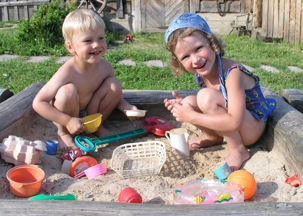The Chronicle of Philanthropy held a live discussion with Jill Warren – a self-described middle class donor – and then wrote an article about it for readers. The moral of the story was that some people with middle-class incomes are passionate enough to make annual gifts representing $10,000 or more – in Jill’s case, up to 60% of household income. That’s a major gift for many organizations.
I worked for an organization who had a “Jill” on staff. The fundraising team did not want to put her on the major gift track because her income was not great, but her passion for the organization was inspiring and she gave a high percentage of her income to demonstrate that passion. I found it confusing. Based upon her demonstrated giving and absolutely by her lifetime giving she was a significant donor to the organization. But she was never assigned a solicitor or specifically cultivated and nurtured as a donor.
An analogy might be a Mercedes customer who drives a Ford. She drives her Ford into the Mercedes dealership and routinely purchases Mercedes for her chauffer business, but the dealership treats her the same as a customer who has only ever once purchased a Mercedes. Why? Because she drives a Ford. Ridiculous? Absolutely!
Wealth or perceived ability to give should not be our *primary* indicator for a best donor prospect. Sometimes the prospect screening and software vendors lead us astray. Vendors are looking to make a profit and focus on those organizations with the biggest budgets to buy their products.
Nonprofit organizations are not looking for only the biggest wallets to give to their organizations. Nonprofits are looking for the most philanthropic people, the people most passionate about their mission AND THEN of those people, the ones who have the ability to support that mission. Passion trumps wealth.
Passion provides us with donors who:
- give recurring or monthly gifts that pay keep our organization running every day
- give us multiple major gifts and challenge other donors to stretch their gifts
- leave us part or all of their estate
- inspire our program recipients, our donors, and ourselves
If you look for wealth first you will miss the passionate “Jill”s in your database.
You can use common sense prospect research techniques to identify those people in your database with passion. Affinity searches can be as simple as filtering for recency, frequency and longevity of giving or you can invest in a more sophisticated statistical analysis to take into account event attendance and other data points.
Get your list together and then get out there!



 In the business world it’s called Customer Relationship Management or CRM. In fundraising we usually call it moves management or prospect tracking. Whatever we name our system, we use it to keep our prospects on track to a gift and to steward our donors to keep giving.
In the business world it’s called Customer Relationship Management or CRM. In fundraising we usually call it moves management or prospect tracking. Whatever we name our system, we use it to keep our prospects on track to a gift and to steward our donors to keep giving. 
 I’d like you to imagine that prospect research is like salt. Too little salt and your food tastes bland, but too much and you end up bloated with water. No matter what the size of your budget or development shop you should always be using prospect research. The trick is using just the right amount. So how much research do you need when a prospect is in the cultivation phase?
I’d like you to imagine that prospect research is like salt. Too little salt and your food tastes bland, but too much and you end up bloated with water. No matter what the size of your budget or development shop you should always be using prospect research. The trick is using just the right amount. So how much research do you need when a prospect is in the cultivation phase? Have you heard of
Have you heard of  A relationship management system goes beyond moves management or prospect tracking. At the
A relationship management system goes beyond moves management or prospect tracking. At the  The
The